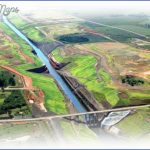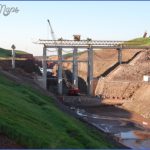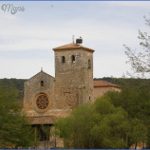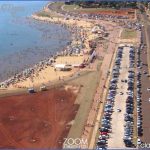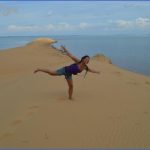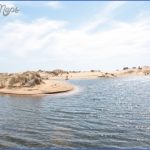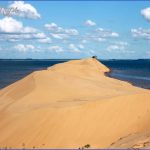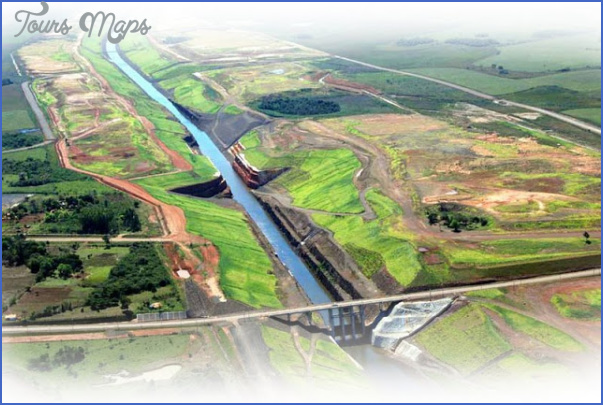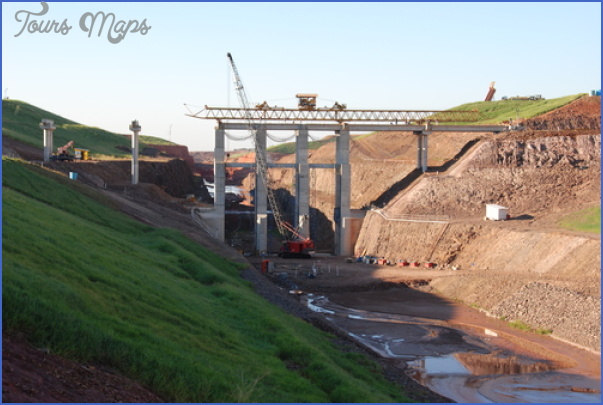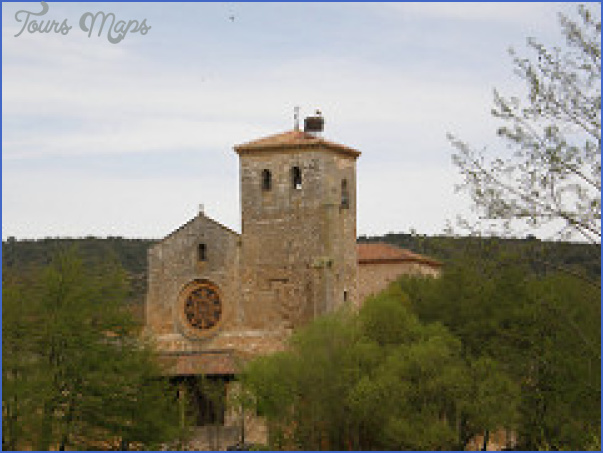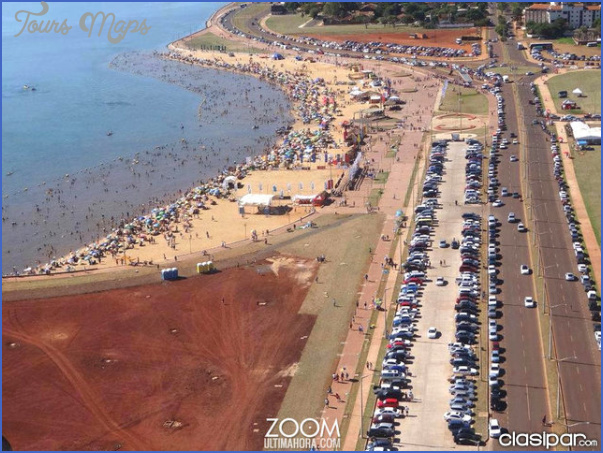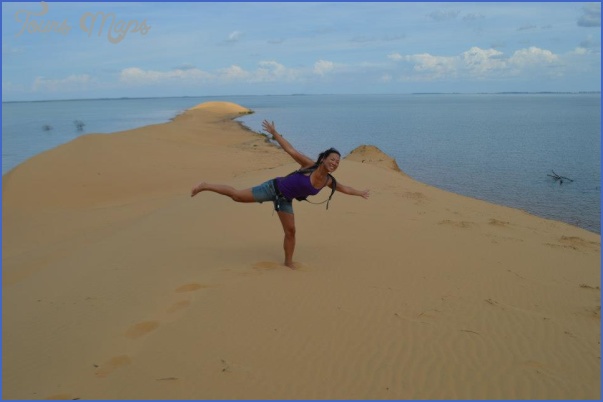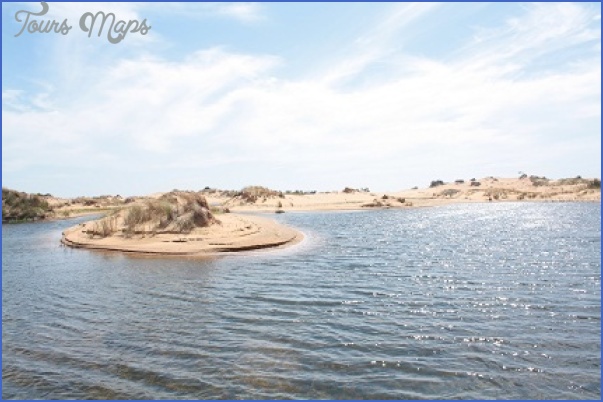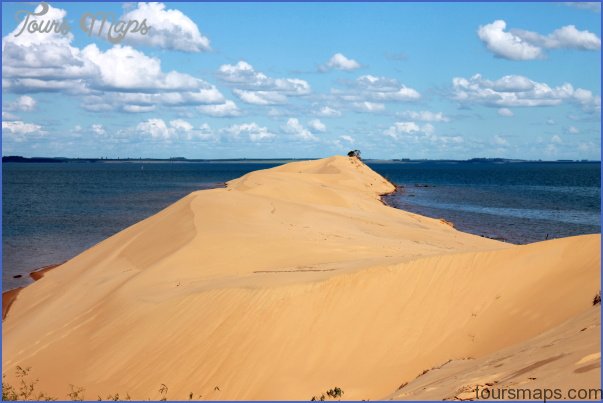Calling the Jesuit mission of San Cosme y Damian ruins would be a misnomer as almost all the remaining buildings are still in use by the surrounding community. Perhaps for this reason out of all the ruins San Cosme provides the best feel for what a functioning Jesuit mission was like. Though it is further from Encarnacion than both Trinidad and Jesus, San Cosme is a worthwhile day trip, not only for the ruins but also for the beautifully serene natural landscapes that surround them.
Though the mission was founded in Brazil in 1632 it was forced to move several times due to attacks from slave traders (see Missions Under Attack) before settling in its current location at a wide bend in the Parana River in 1760, only seven years before the order’s expulsion from Paraguay. At the time the mission functioned as one of the most important centers for astronomical observation in all of South America (see Father Buenaventura, The Jesuit Astronomer). Today the most distinctive feature of San Cosme y Damian is that it boasts the only original Jesuit church to still be in use.
Originally the entire mission was surrounded by a five-meter high wall, the remains of which can still be seen next to the church. The mission’s entrance portal has been reconstructed (the red sandstone portion is original) and features a curious carved bat. Underneath are two chalices, symbols of the medical saints for which the mission is named.
At sixty-five by twelve meters with ten-meter high walls the church was meant to be a provisional structure but the Jesuits were expelled before the iglesia mayor (main church) could be completed. As a result the church lacks many of the decorative elements still visible in the ruins of Trinidad or Jesus. However, as it remains a fully functional church its interior is adorned with twenty-two wooden sculptures which were carved in the mission’s workshops. Many of these conserve their original paint and gold leaf. Highlights include St. Michael battling a hermaphrodite devil and Sts. Cosmas and Damian for which the mission is named. Another prized piece is the gold-leafed wooden chair in used by Pope John Paul II during his visit to Paraguay in 1989. Towards the back of the church are original stone baptismal fonts. The center section of the church floor is original and you can see the decorative etchings creating a geometric tile effect. In 1889 the church was damaged by a fire. The undamaged part remained in use until 1971 when the roof finally collapsed and was not reconstructed until 1991.
The corner room behind the church once functioned as a kitchen with an adjacent dining room. In the room to the right (the lavadero) you can see an original hand washing station with water coming out of carved faces. Extending to the right are rooms that functioned as the workshops and the school and are still in use today. Restoration of this area took place between 1994 and 1997. All rooms have original decorative elements – painted walls and ceilings, wrought ironwork. The doors of the fourth room (labeled room seven) are original and were used as models for the rest of the mission’s reconstructed doors. The second room has a surprisingly sturdy original ladder leading up to the attic, which extends the length of the building. From the second floor you can peer into the mission’s courtyard and see the ruins of what was intended to be the main mission church. From the exterior windows the Parana River is visible in the distance. Be careful when walking around the attic though as all the floorboards are original and there are some areas with gaps.
The last room is believed to have been the observatory where Father Buenaventura studied the night sky. The only vestige of this once famous observatory is the sundial in the building’s courtyard. The dial, dating from 1718, marks time from 7am to 5pm in a counter clockwise half circle. Father Buenaventura’s legacy has been honored with the creation of a modern astronomy center just across from the mission’s main plaza.
The now grassy interior courtyard was once covered in stones and designed to funnel rain water towards channels leading to the latrines next to the observatory. Rounding the corner you can walk along the back corridor of the building and enjoy the view.
As with other Jesuit towns, the remaining indigenous dwellings, built along the sides of the main plaza, are currently in use as offices and private homes.
On a cool day the approximately 1.5 km walk down to the river banks is quite enjoyable. If facing the mission walk one block to the right and then take the dirt road to the left which leads all the way down to the water. Another option is to walk to the left along the road that runs behind the mission. Along the way you will pass the traditional clapboard houses of the town’s rural residents as well as many oven birds (alonsitos or horneros) poking their heads out of their circular mud nests in the trees.
Sidebar: Had the main church been built, this building would have been subdivided into rooms for a school and workshop – this accounts for all the doors.
San Cosme y Damian Paraguay Photo Gallery
Maybe You Like Them Too
- The Best Cities To Visit in The World
- World’s 10 Best Places To Visit
- Coolest Countries in the World to Visit
- Travel to Santorini, Greece
- Map of Barbados – Holiday in Barbados

